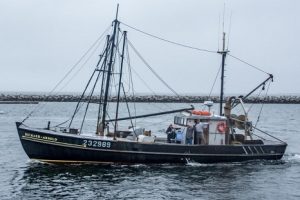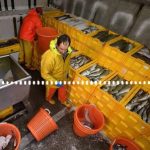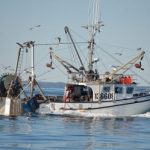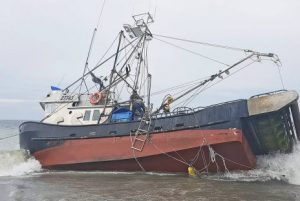Tag Archives: female blue crabs
Louisiana: New restrictions create burden for local crabbers
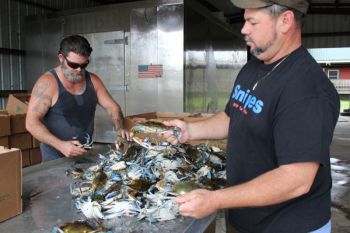 For Whitney Curole of Des Allemands, being a fisherman is an “always” kind of thing — he’s been a crabber since his teenage years, following in the footsteps of his father, and that passion for fishing runs throughout his entire family. But all of that experience nonetheless doesn’t mean it’s not hard sometimes. This year was the first in which the Louisiana Department of Wildlife and Fisheries placed restrictions on blue crab harvest in an effort to restore the blue crab’s population in state waters. “I fought against (the initial one-month ban),” said Curole, who catches crabs and ships them all over the country and who retails crabs himself through his family business in Donaldsonville. click here to read the story 09:05
For Whitney Curole of Des Allemands, being a fisherman is an “always” kind of thing — he’s been a crabber since his teenage years, following in the footsteps of his father, and that passion for fishing runs throughout his entire family. But all of that experience nonetheless doesn’t mean it’s not hard sometimes. This year was the first in which the Louisiana Department of Wildlife and Fisheries placed restrictions on blue crab harvest in an effort to restore the blue crab’s population in state waters. “I fought against (the initial one-month ban),” said Curole, who catches crabs and ships them all over the country and who retails crabs himself through his family business in Donaldsonville. click here to read the story 09:05
Female blue crabs getting tagged in Gulf migration study
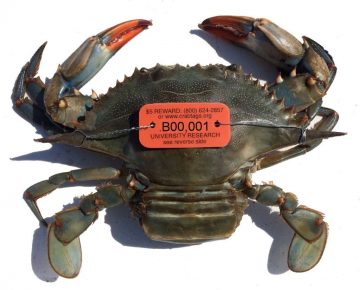 Their scientific name – Callinectes sapidus – means “beautiful swimmer.” But just where, when and how far do blue crabs – specifically, the Gulf of Mexico’s adult female blue crabs – beautifully swim? A just-started, Gulf Coast-wide research project involving affixing tags on as many as 30,000 adult female blue crabs aims to try answering those questions. Insights garnered through reporting of the recovery of those marked crustaceans should help fisheries scientists better understand the population dynamics of this key coastal marine species and translate that knowledge into sound, science-based management decisions. Those management decisions will be crucial to maintaining a healthy population of blue crabs, the Gulf Coast’s most abundant large crab – a vital prey/predator component of the marine ecosystem and an economically and socially important piece of the recreational and commercial fishery. There is a lot to learn about blue crabs. Read the rest here 22:45
Their scientific name – Callinectes sapidus – means “beautiful swimmer.” But just where, when and how far do blue crabs – specifically, the Gulf of Mexico’s adult female blue crabs – beautifully swim? A just-started, Gulf Coast-wide research project involving affixing tags on as many as 30,000 adult female blue crabs aims to try answering those questions. Insights garnered through reporting of the recovery of those marked crustaceans should help fisheries scientists better understand the population dynamics of this key coastal marine species and translate that knowledge into sound, science-based management decisions. Those management decisions will be crucial to maintaining a healthy population of blue crabs, the Gulf Coast’s most abundant large crab – a vital prey/predator component of the marine ecosystem and an economically and socially important piece of the recreational and commercial fishery. There is a lot to learn about blue crabs. Read the rest here 22:45
To save their depleted species, female blue crabs go the extra mile to spawn in the bay
 Deep under the cold, dark waters of the Chesapeake Bay, the answer to whether the decimated blue crab population can survive lies buried in mud. Tens of millions of female crabs are scattered across the floor of the lower bay in southern Virginia, where the estuary pours into the Atlantic Ocean, waiting out winter for one of the most important events in their short lives. When spring comes, they will inch closer to the ocean with billions of eggs. Read the rest here 11:21
Deep under the cold, dark waters of the Chesapeake Bay, the answer to whether the decimated blue crab population can survive lies buried in mud. Tens of millions of female crabs are scattered across the floor of the lower bay in southern Virginia, where the estuary pours into the Atlantic Ocean, waiting out winter for one of the most important events in their short lives. When spring comes, they will inch closer to the ocean with billions of eggs. Read the rest here 11:21

































